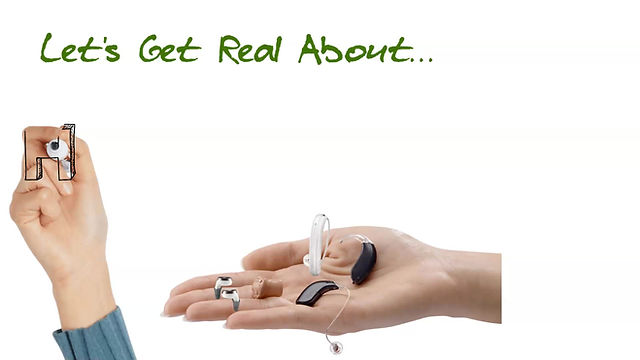hear·ing aid
/ˈhi(ə)riNG ˌād/
noun
plural noun: hearing aids
-
an electronic device designed to improve hearing by making sound audible to a person with hearing loss. Hearing aids are classified as regulated medical devices in most countries

"Only 8% of hearing aid users are dissatisfied with sound quality. If we compare users of hearing aids that are </= 5 years old to </= 1 year old, we see that for following conversations in background noise there is a 7% improvement. For using hearing aids in the workplace, satisfaction has gone from 65% for MarkeTrak VIII (~2010) to 92% for MarkeTrak X (~2020). For listening in background noise, satisfaction goes from 27% for non-adopters to 76% for hearing aid users!"
Gus Mueller, PhD
Contributing Editor
Audiology Online
"Data on hearing losses suggest that 314 in 1000 people over 65, and roughly 40-50% of people over 75 have hearing loss. For younger ages, it is estimated that 1/6 baby boomers (14.6%) and 1/14 Gen Xers (7.4%) already have hearing loss. But we don’t see the same trend with purchase. When looking at hearing aid adoption rate by age, younger people, under 35, actually purchase aids at a higher rate than middle aged people 35-64. It is an interesting trend that was investigated further in MT2022....we think that one of the partial explanations for the increased rates of younger adults obtaining hearing aids is that they had them as kids because they were identified much younger. If we think about it, some of the first children to be implanted with a cochlear implant have still not yet reached the age of 35."
Lindsey E. Jorgensen, AuD, PhD
20Q: Hearing Aid Adoption — What MarkeTrak Surveys Are Telling Us
Audiology Online
WATCH:
Eastside Audiology & Rehabilitation Inc.
created a video with 9 recommendations to consider BEFORE purchasing a hearing aid:

Which Manufacturers Does Eastside Audiology Use?
"Each manufacturer has a portfolio ranging anywhere from 5 to 10 different circuits and every one of these manufacturers approaches hearing loss from a different perspective, such as using their own proprietary algorithms inside their own proprietary circuit. Different algorithms affect hearing loss in different ways. One circuit may be appropriate for Hearing Loss X but it may not necessarily be the best for Hearing Loss Y – this is why two different people with similar hearing losses can have vastly different experiences with different manufacturers"
Did You Know?

What should I expect when I come to Eastside Audiology?
The first step is about educating you, the patient, on your individual hearing health and your specific hearing issues, so we will begin with a baseline hearing test. Next we will determine your goals. We want to know what you want to achieve and those are the parameters that we will work within. Who knows? Your first goal may be to just get your family off your back! In time, it may develop into wanting to learn more about hearing aid options. Not everyone is ready for a hearing aid when the loss suggests it. Lifestyle is a significant factor. As Dr. Davis says, “I wore glasses to correct my vision for school – but only on a part time basis. It wasn’t until I started my career when my needs changed that I started wearing them full time, even though my prescription was still the same.” We respect the process because we want this to work as much as you do.
“no pressure, no quotas, no commission sales…
At Eastside Audiology you can expect respect, and you can expect knowledge"

"You have to hear what you don't want to hear to know what you don't want to hear"
- Dr. H. Gustav Mueller

How Does Eastside Audiology Fit Hearing Aids?
All hearing aid fittings at Eastside Audiology include Real Ear Measurement (REM) Verification. This verification involves the placement of a probe tube anywhere from approximately 20mm (for children) to 31mm past the intertragal notch (adult males). So in layman's terms: this probe tube is reeeally close to your ear drum - much deeper than your hearing aid.
REM verification is important because it objectively measures how a hearing aid's intensity (volume) and frequency response (pitch) are affected by *your* ear.
"A proper hearing aid fitting is like building a house on stone as opposed to building a house on sand. No matter how well built the house is - without the proper foundation it will always eventually fall down"











